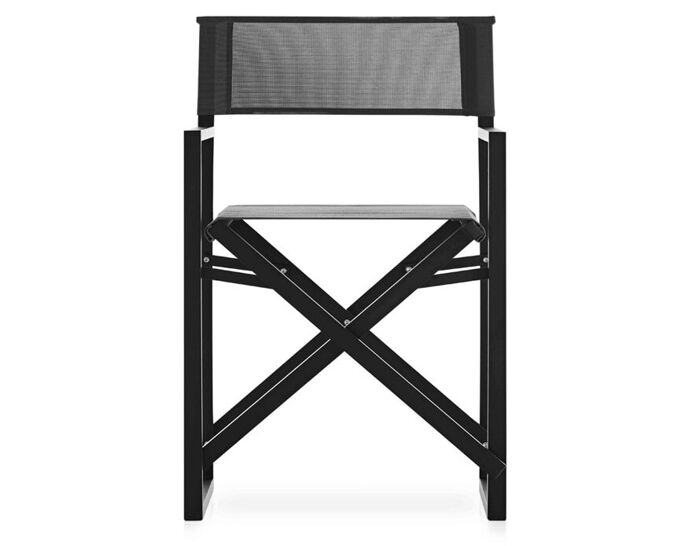clack! chair
from Gandia Blasco
clack! chair
Design Jose A. Gandia-Blasco Canales
Aluminum, plastic fabric
Made in Spain by Gandiablasco
Clack! is an improved version of the traditional wood and canvas folding garden chair. Although at first glance you might think it hasn't changed much at all, it's really a very different version as its structure isn't wood, it's aluminium. This changes everything, making it lighter and more weather resistant, but more stylish too. That's why it fits equally well into an informal beach setting as in an elegant outdoor dining area.
Apart from having an aluminium structure, the seat and the back are made from an ergonomic plastic fabric, so the whole chair is much more resistant to sun, water and salt than the traditional wood and canvas versions. Plus, both these new materials need less maintenance. By making these simple changes, the chair's designer, José A. Gandía-Blasco, has made this basic item hugely more stylish.
José Antonio Gandía-Blasco Canales was born in Ontinyent, Valencia. After studying law at the Valencia University, he joined the family business Gandia Blasco, a blanket manufacturer. After travelling throughout Spain as a business agent, he began to take on more responsibilities which led to reshaping the image of the company. The current logo was created, the silhouette of a graceful kitten, as well as the first reversible design carpet collection, which later received the IMPIVA Award 1990 for innovation. José A. is not only president of the company but also the art director. He has designed a large part of the furniture and textile collections that are being commercialized today.
Please note the height of the armrests only allows fitting the chair under the 36" to 48" Pada tables and in all Saler tables, except under the 92" table.
34" h l 22" w | 17" d | seat: 20" h | arms: 26" h | 9.2 lbs.
Aluminum, plastic fabric
Made in Spain by Gandiablasco
Clack! is an improved version of the traditional wood and canvas folding garden chair. Although at first glance you might think it hasn't changed much at all, it's really a very different version as its structure isn't wood, it's aluminium. This changes everything, making it lighter and more weather resistant, but more stylish too. That's why it fits equally well into an informal beach setting as in an elegant outdoor dining area.
Apart from having an aluminium structure, the seat and the back are made from an ergonomic plastic fabric, so the whole chair is much more resistant to sun, water and salt than the traditional wood and canvas versions. Plus, both these new materials need less maintenance. By making these simple changes, the chair's designer, José A. Gandía-Blasco, has made this basic item hugely more stylish.
José Antonio Gandía-Blasco Canales was born in Ontinyent, Valencia. After studying law at the Valencia University, he joined the family business Gandia Blasco, a blanket manufacturer. After travelling throughout Spain as a business agent, he began to take on more responsibilities which led to reshaping the image of the company. The current logo was created, the silhouette of a graceful kitten, as well as the first reversible design carpet collection, which later received the IMPIVA Award 1990 for innovation. José A. is not only president of the company but also the art director. He has designed a large part of the furniture and textile collections that are being commercialized today.
Please note the height of the armrests only allows fitting the chair under the 36" to 48" Pada tables and in all Saler tables, except under the 92" table.
34" h l 22" w | 17" d | seat: 20" h | arms: 26" h | 9.2 lbs.
$730.00 + free shipping
Gandia Blasco began as a family business in 1941, manufacturing blankets before becoming known primarily for their outdoor furniture. Located outside Valencia and managed by Jos3 Gandia-Blasco (father of Jose Antonio, current company president), the company mainly employed people from neighboring towns and remained in the blanket business until the mid 1980's. International competition pushed them to modernize, and they did so by expanding into the carpet and textile markets. Their success with outdoor furniture came when Jose Antonio was furnishing his home and developed the "Na Xemena"? line with the house's architect, Ramon Esteve. This collection popularized the company and caused a change in approach and philosophy to combine comfort with functionality and aesthetic integrity.












 write a review now
write a review now